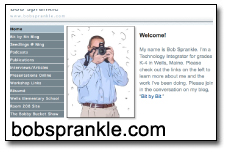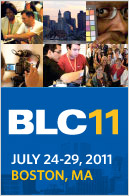Process vs Product
(cross-posted at The November Learning Blog)
Years ago I accompanied a student who I was working one-on-one with to an event at his school where his entire grade level was having a special “showing” of their Social Studies Projects. I can’t remember the unit they were studying. I can’t remember what the project was (I vaguely recall the “Oregon Trail” or “log cabins,” or maybe “wetlands,” but I could be completely wrong on each of these guesses). What I do remember is that this particular school had been running this event yearly for a very long time —and that it was important— VERY important. The whole community showed up for the event —parents, teachers, siblings, grandparents— and walked around the gymnasium viewing the completed work (dioramas maybe?).
For most readers, I realize that I only have to add one detail for you to see what played out that evening (and I guess every year for this event): the project had been assigned for homework.
In other words, completely at home; not at school.
Let me interrupt here to say that I am not focusing on homework for this post (that is a much longer post, and I think Alfie Kohn has already taken care of that for us). So let us leave the issues and pros and cons of homework to the side for now, and just zoom in on those completed projects (were they poster boards…?).
Can you see them?
Some of those projects (whatever they were) are pure expressions of genius. They’re masterpieces. Works of art. Feats of engineering not yet realized. Color schemes compliment the themes. Just the right amount of glitter; not too much, not too little. If glue was used, all evidence has been camouflaged. Lines are straight as a ruler and circles seem to have sprung from lathes run by magical elves. The structures are sturdy enough to have survived the car rides over to the school and will last for generations to come, perhaps transforming from their original purpose into Thanksgiving centerpieces or by taking their rightful places on trophy shelves. Throughout the evening of presentation, there will be large crowds gathered around these projects. One will have to wait in long queues to get to see them. No one will be allowed to touch.
Further down the line, past the crowds, there will be another breed of product completely. These projects are the complete opposite of those described above. Gone are the realistic astro-grass lawns, the miniature people procured from a real Hobby Shop. Shellacked and interlocking dowels will be replaced by Popsicle sticks and toothpicks. Glue-gobs will not only be visible, they will still be in the process of drying. It will be obvious that Magic Markers replaced paint and you will be able to spot exactly where they began drying up during their application. Perhaps the projects have survived the car rides here, but their fate for the trips home are in critical mode, and some will barely make it past the parking lot dumpster. Whereas the other products were life-like, these projects will sorely stand out among their more professional counterparts as representations of ideas rather than something familiar to the physical universe. In fact, the most generous compliment bestowed upon them is that they look as though a “fourth grader” made them.
Which is, by the way, exactly who made them.
This grade level, after all, is fourth grade.
So let’s identify the “elephant in the room.” Some of these projects were created entirely by 4th grade students (as they were supposed to be) and some of them were created (at least in part) by… parents. There’s no real secret about this either: most of the murmurings in the gym that night were of the flavor of, “no kid made that!” or “this was obviously made by a parent!” Of course, these assessments were heard from those families that let the 4th grade student do all the work independently. There are probably infinite reasons for why this was allowed: could be that parents really believe in their students’ right to create on their own, or they don’t believe in “cheating” (not my words, by the way; this is what students who had done their own work called it), or, on the a less optimistic side of possibilities, parents had no interest in finding out about their students’ assignment and no desire to get involved.
Again, without getting into the issue of homework, as well as not examining the obvious “equalizer” of requiring all projects to be created entirely at school with access to uniform supplies and support, we must take pause and examine what it is we are celebrating on an evening like this.
It clearly is PRODUCT. As we move around the gymnasium, we see only the final “image,” if you will, of a journey untold. The learning involved, the struggles and successes, and even the purpose of the finished creations usually remain a mystery. At times, journals accompany the work, or a write-up by the teacher is posted at the front of the exhibit, but it is the PRODUCTS that win the attention, hands-down.
Which is… of course why some parents feel compelled to “chip in.” If PRODUCT is “king,” then that becomes what counts, and will always overshadow the PROCESS, or the learning.
Imagine, if you would, the same evening of celebration for students, however, this time, parents watch from the sidelines as students actually create the products, or if the products on display were accompanied by audio/video/journals of what the students learned. The evening could be extended to give the students time to share their learning, but also to teach their families what they learned. Parents could be given short quizzes (created by the students) to give the students feedback on how well they taught the information. Or… after the students teach their parents the information, then the students and parents could build the final product together, all the time consulting reference material, the student’s notes, and discussing the curriculum standards being acquired. These final products could then be shared by publishing pictures of them to the Internet… or not. For the question is: what is the purpose of publication?
There are numerous answers to this question: making work purposeful, providing an authentic audience, making learning a conversation (on a blog, for instance), but I think we too often forget another important aspect when we ask our students to publish: to show the journey of learning, in other words, how did the student get to this final point?
Whenever I give a workshop on blogging, invariably, a teacher will ask what I think about leaving students’ original misspellings (or invented spelling), incorrect grammar, lack of punctuation in the entries. I believe, without a doubt, we want our students to arrive at publication that is polished… students should be asked to go back and fix mistakes, and if they aren’t able to find the mistakes, then it’s a perfect opportunity for mini-lessons on the skills.
HOWEVER… why aren’t we showing all steps to the final product? What is so wrong in publishing each draft along with the final polished draft? This transparency would show the student’s steps of learning, showing both growth as well as struggles. And, if a student is not yet able to attain a certain skill (even after additional mini lessons on the desired skill), then what is the point of the teacher fixing the errors? Doesn’t that just “cloud” the “snapshot” or continuum stage that the student is at? Everything looks perfect on the blog, for instance, but then the student’s report card says otherwise?
And what is so wrong in showing our sloppy mistakes and struggles? Isn’t that what school is all about? Aren’t we there to perfect our skills and get to the level where our work is truly “polished?”
Why are we reticent to show the struggles students experience, the “bumpy” journey of learning, the truth that students will attain skills at different stages and pacing from their peers, and present only the final PRODUCT, which can never encapsulate the story of where the student started and how he/she got to this end.
Recently, my after school Tech Group presented their work-in-progress to parents. This group of students have completed all work as a collective group, with very little input from me. All decisions have been made by the students. The entire presentation was put together by the students… in fact, I barely knew what they were going to present until I heard it for the first time, along with the parents.
At first, you could see the parents were a bit uncomfortable with this method. They kept asking the students about what had already been accomplished, or what will be accomplished, or, what PRODUCT they had to show. Since the students are really at the beginning of their work (i.e., are closer to the beginning of the journey and still making decisions on what their goals are), they presented their ideas, how the ideas were created, what plans they might have, what decisions they had already made, and what the next steps were going to be.
Parents were seeing the process of them actually building their work. In fact, during the presentation, there were several times when the students began generating new ideas and broke into discussion between themselves, with the parents suddenly relegated to the role of witnesses. The last part of the students’ presentation was taking questions and comments from the parents. The students have used some of the parents’ feedback in their subsequent meetings as they continue their work.
It took a while, but I think the parents finally understood that they were not there to hear a “finished” work being presented. The students never promised such an event, and in fact, it was the parents who had originally asked the students to present what they had accomplished so far.
From where I stood, it was a marvelous experience: parents got to see the very rare building of the work (something usually shrouded and mysterious) and the students were able to get great feedback and accolades during the process of the work they’ve been doing.
There were no “projects” to take home that evening. Instead, everyone left energized and there was a feeling of excitement for not only of what was yet to come, but what was being created right before our very eyes.









2 comments
It is hugely exciting to consider the power behind the process!
At the close of a recent workshop with a set of science teachers, Professor Randy Yerrick (http://gse.buffalo.edu/about/directory/faculty/yerrick) posed this question: “What artifacts of learning are your students creating?”
Documenting and mining our â??bumpy journeys of learningâ? can model instructional rigor at its best. Probing, exploring, awakening prior knowledge, identifying, questioning, connecting, reconsidering, validating, synthesizing, inferring, designing, applying, reflecting, iterating, reiterating, leveragingâ?¦ Such verbs stand for the more personal & critical components of a learnerâ??s experience. The individual and collaborative steps - smooth and bumpy, right and wrong turns - are what define a learnerâ??s journey and serve to shape their understanding. It begs the question, â??What am I missing by not considering or acknowledging the full story of my students learning?â?
In an effort to embrace the process, students have been working to document their journeys of learning. Some rough & unpolished, each sample serves as a true reflection of the learning that took place, both formally and â??between the cracksâ?.
Students collaborating to create content (note comments on discussion tabs of each page)
- http://summer10.wikis.birmingham.k12.mi.us/Pure+MI+-+Fantastic+Ignite+4
- http://brainyard.wikispaces.com/sepsd2511
- http://whitmer.wikis.birmingham.k12.mi.us/Visit+Chile!
Students drafting, editing, revising and publishing through peer and teacher feedback (note peer feedback on discussion tab)
http://fitzgerald09.wikis.birmingham.k12.mi.us/James%27+Fitional+Writing+Piece
Students digging to better understand â??how the world worksâ?
http://blogs.birmingham.k12.mi.us/whitmer
Sewilkie,
Thank you for sharing these thoughts and links!
Leave a Comment